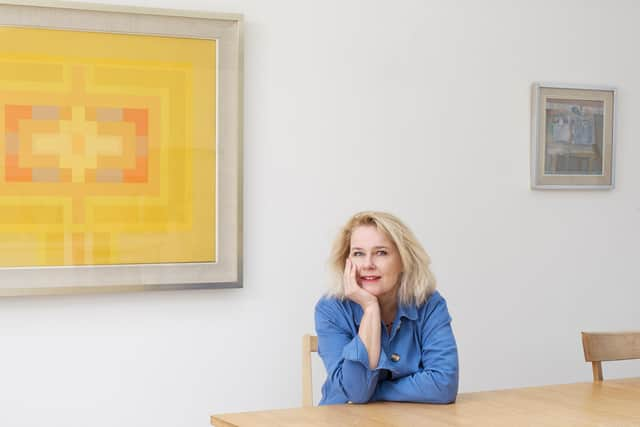Book review: Thunderclap, by Laura Cumming
As a schoolboy, I bought two series of part-work magazines on “the great artists”. For good measure, I read EH Gombrich’s The Story Of Art and Norbert Lynton’s The Story Of Modern Art. And that was art mentally ticked off, much as I could tick off quadratic equations. Two things later made me realise what an adolescent I was. Some galleries had work by artists who were not “the great artists” and they were striking and good. The second thing was the slow realisation that I had actually never seen any of their work. I could tell a Monet from a Mondrian, but all I had really seen was a reproduction of the work on glossy paper. Nothing compared to seeing a series of Rothko paintings at full scale; or even the contemplative serenity of seeing all of Poussin’s Seven Sacraments in one octagonal room in the Scottish National Gallery. It is only one of the joys of Cumming’s book that she reasserts the primacy of the genuine encounter. We may be decades on from Walter Benjamin’s “The Work of Art in the Age of Mechanical Reproduction”, but there are increasingly countervailing voices. There is a knowing irony in Cumming beginning by talking about the postcard fixed above her desk during the pandemic.
The book is subtitled “A memoir of art and life & sudden death”. The thunderclap of the title occurred on the 12th of October, 1654, in the city of Delft, when stored tonnes of gunpowder somehow ignited. How that happened is one of the book’s many riddles and mysteries. It was a disaster on a scale that it was heard 70 miles away. It also brought to an end the life of the painter Carel Fabritius.
Advertisement
Hide AdI knew very little about Fabritius – suffice to say he did not make the cut for the so-called “great artists”. All that I really knew was that one of his paintings, The Goldfinch, is the McGuffin for Donna Tartt’s novel. (Curiously, it is filched in another explosion. Cumming does not reference Tartt’s book). What I have seen, but not seen, is a remarkable oeuvre. Very few paintings by Fabritius survive, and the few that do are usually footnotes, as she observes, in patrilineal art histories where he is accorded the glory of being the missing link between Rembrandt and Vermeer. He certainly painted more than what survives – this is known from careful inventories of Dutch houses – but that which is extant is staggeringly small.


This is not a biography of Fabritius. Such a feat would be nigh impossible as he seems to glide on the edge of history. Where Cumming truly excels is in the defence of Dutch art. As she notes, it was often disparaged as being “low” or merely representative, a notion she skewers with glee. The memoir aspects are neatly choreographed. The big bang that did for Fabritius is echoed in her artist father’s too-early death and in her daughter’s scotoma leading to colour blindness through stargazing. That her first foreign holiday was to Holland, with her father teaching her to see Dutch art rather than merely look at it, is another piece of connective tissue between the 17th century and the now.
In some ways, I wish she had written more about her father, James Cumming, who taught at Edinburgh School of Art. To my shame, I had never heard of him. The two reproductions of his work, one of the Brahan Seer and the far more abstract Chromosomes II, are fascinating. I hope one day to actually cast my eyes on one.
The book ruminates on optics and the experience of art. “We see pictures in time and place”, she writes. “Whatever we are that day, whatever is going on behind our eyes, or in the forest of our lives, is present in what we see. We see with everything that we are”. In her meticulous reading of Fabritius and other Dutch artists, there is a strange sense of transcendence, of hats becoming haloes and peaches planetary bodies. Literature, music, theatre, dance all unfurl in time: art, being fixed even if it is a fiction, does not and therefore demands time. The average time the average tourist spends with a painting in a gallery is risibly miniscule. Another feature which gave me utter delight was all the other artists about whom I knew little or nothing. My Google search history will now indelibly have Emanuel de Witte, Adriaen Coorte, Ter Borch, Rachel Ruysch, Maria van Oosterwijck and Egbert Van Der Poel (a weird apocalyptic painter, who revisits the scene of the Thunderclap as if suffering from Post-Traumatic Stress Disorder) safely filed away. There are also trompe l’oeil boxes – only six in existence! Fabritius, meanwhile, is “like a suicide who takes his secrets away with him”.
This is a remarkable book. I would not say it “educates and entertains”, because though I learned a lot, the overarching sky is cloudy, lowering and melancholy. Cumming ought to be allowed to write about any topic in any way, although her art criticism is always precise and unexpected. This review, by the way, was written in a thunderstorm.
Thunderclap, by Laura Cumming, Chatto & Windus, £25. Laura Cumming is appearing at the Edinburgh International Book Festival on 13 August, see www.edbookfest.co.uk